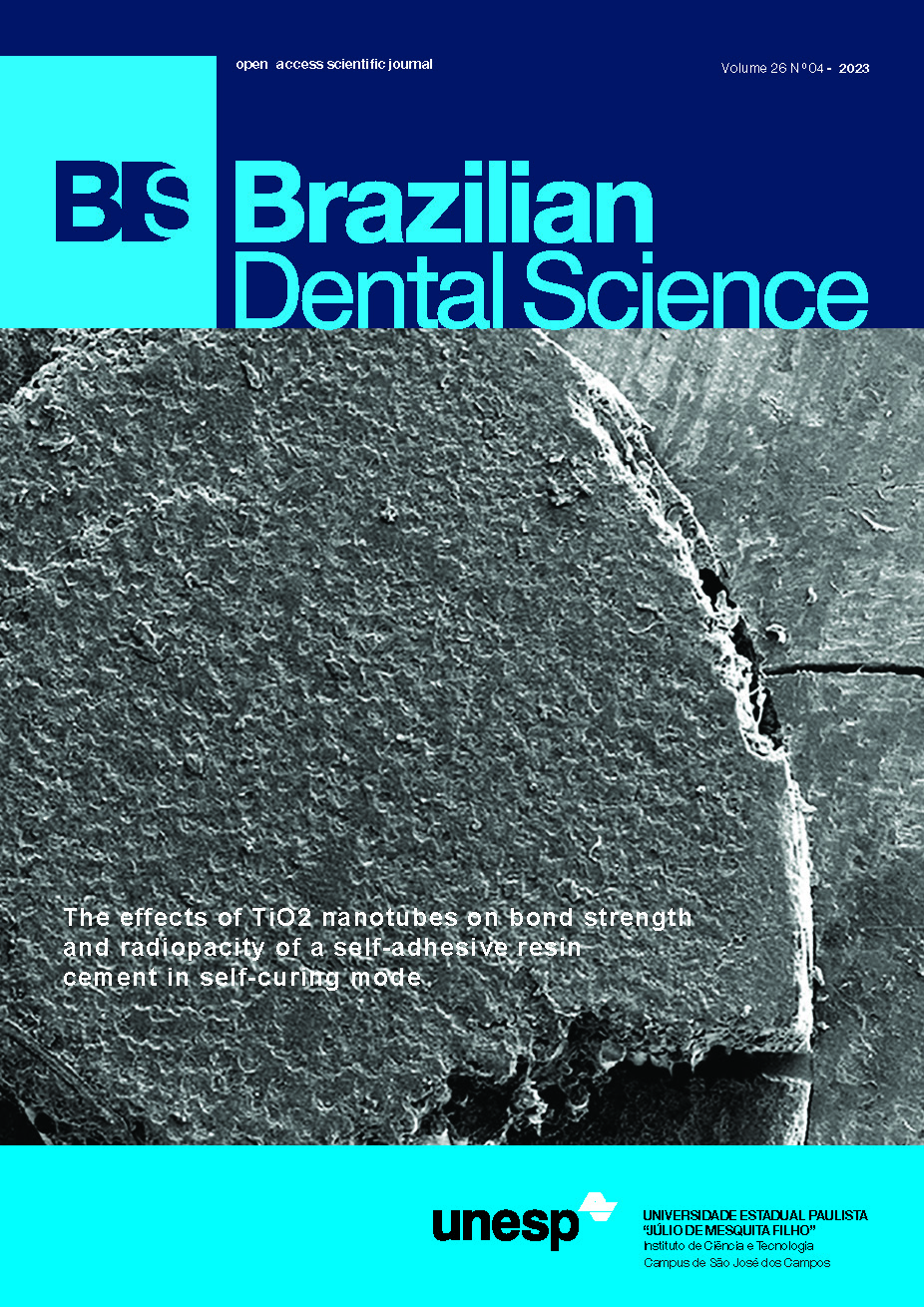Morphological alterations of the apical foramen after foraminal enlargement: a systematic review of ex vivo studies
DOI:
https://doi.org/10.4322/bds.2023.e4065Abstract
Foraminal enlargement has been recommended to optimize the disinfection of infected root canals, although some authors still claim that the foramen should be kept in its original shape and position. This study aimed to evaluate morphological alterations of apical foramen after foraminal enlargement through a systematic review. An electronic search was conducted until April 2022. Ex vivo studies evaluating influence of foraminal enlargement in the morphologic changes of apical foramen were included. Studies without a control group or available full text were excluded. Foraminal deformation and area increase were considered as primary outcomes. Risk-of-bias assessment was performed according to a modified Joanna Briggs Institute’s Checklist. From 702 studies retrieved, five were eligible. Most studies used single-rooted teeth, and rotary systems for instrumentation ranging from – 2 mm to + 1 mm to the apex. All studies found increased major foramen deformation after foraminal enlargement. Among four studies that evaluated foraminal area, all found increased area after foraminal enlargement. Insufficient data for touched/untouched walls by instruments and dentinal microcrack formation was observed. A low risk of bias was found. Foraminal enlargement during root canal preparation seems to increase deformation and major apical foramen area. Future investigations with standardized methodologies are encouraged.
KEYWORDS
Apical foramen; Endodontics; Root canal preparation; Root canal therapy; Tooth apex.
Downloads
Published
How to Cite
Issue
Section
License
Brazilian Dental Science uses the Creative Commons (CC-BY 4.0) license, thus preserving the integrity of articles in an open access environment. The journal allows the author to retain publishing rights without restrictions.
=================




























